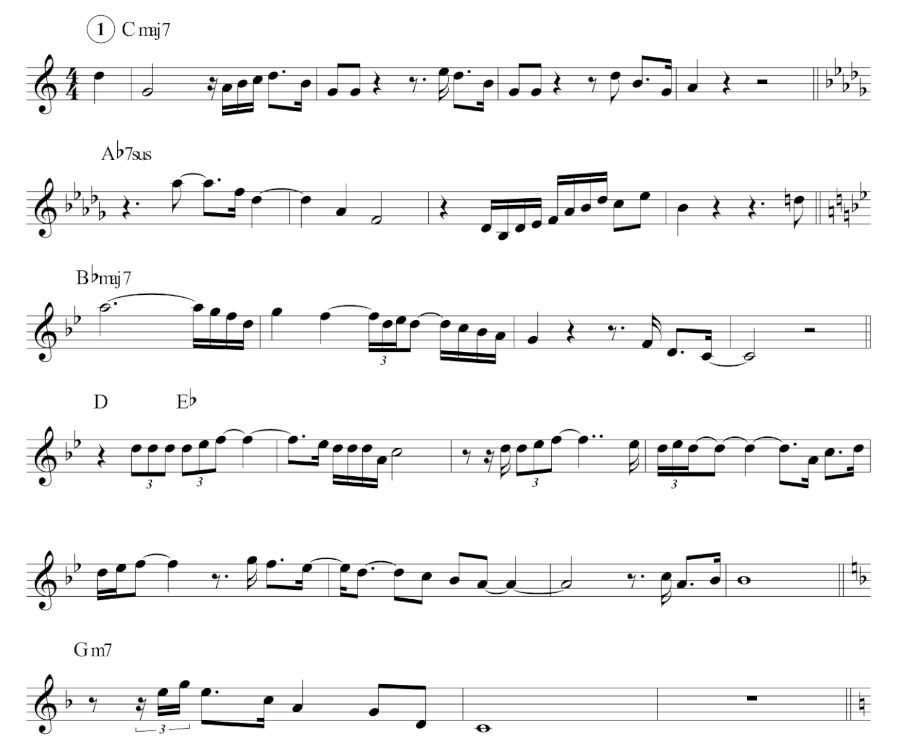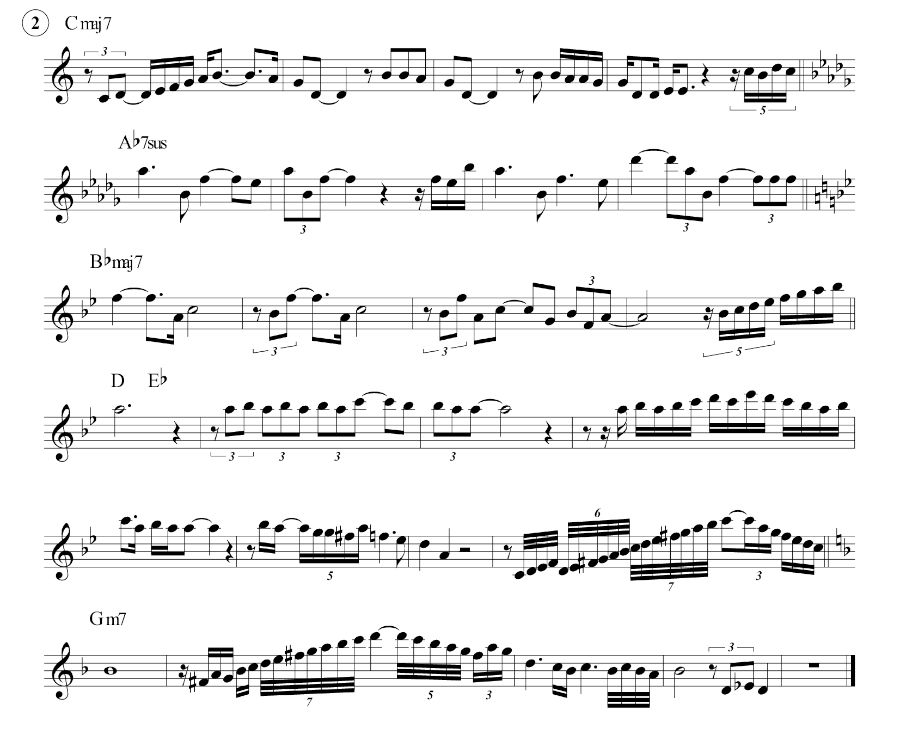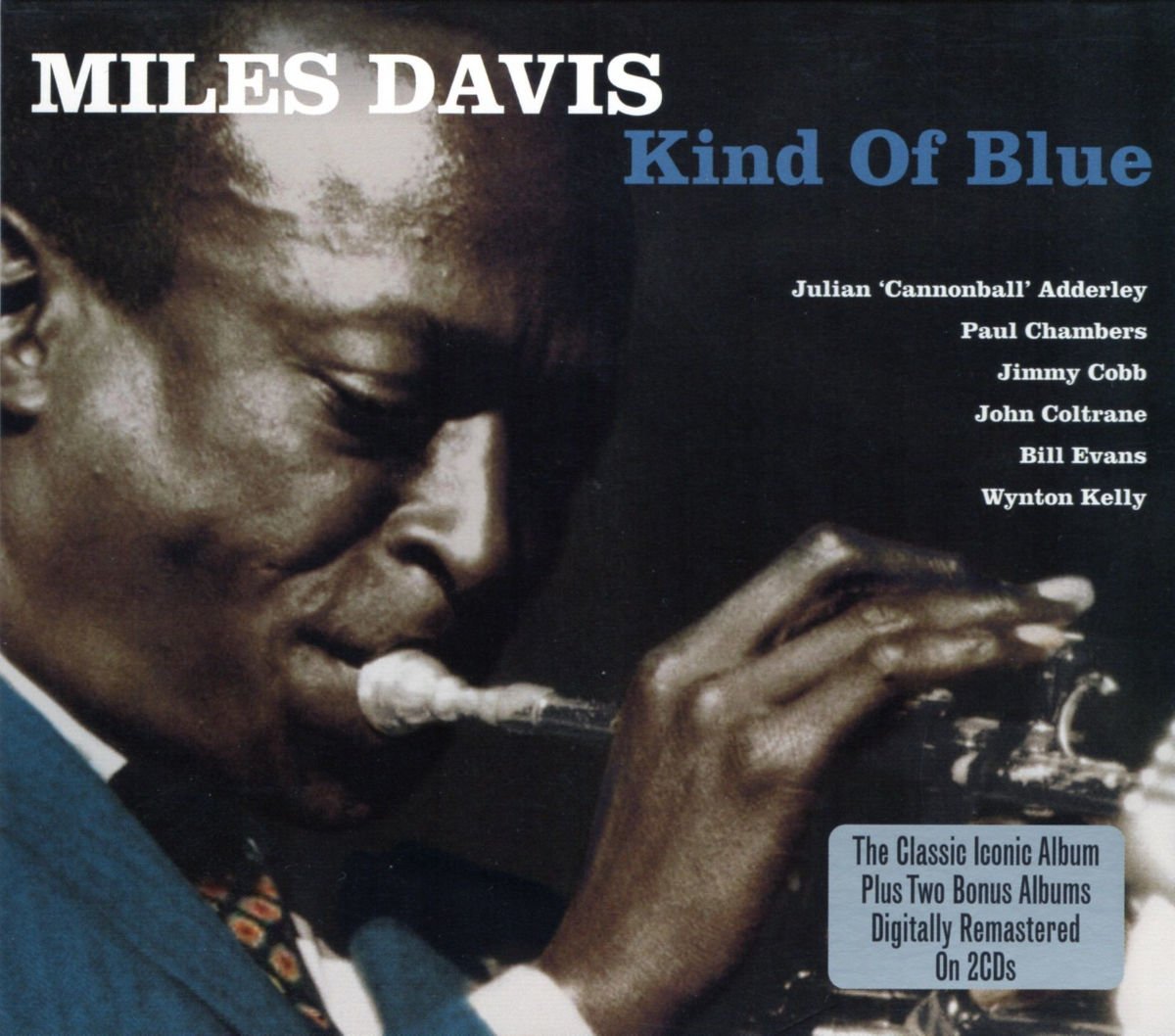[Monday’s Notes no. 148] Flamenco Sketches is a track from Miles Davis’ album Kind of Blue, a masterpiece entirely dedicated to modal music. Among the various modal scales, the Phrygian mode and the flamenco scale are of particular importance, hence the title of this composition, of clear Hispanic inspiration. I transcribed and analysed the solos by Miles Davis and John Coltrane on Flamenco Sketches.
For the recording of Kind Of Blue, it seems that Miles Davis did not give the sheet music to the musicians in advance, with the clear intention of taking them by surprise and forcing them to improvise in a more authentic and inventive manner.
Flamenco Sketches is an open-form composition. The piece is based on the succession of five modal scales, on which each musician is free to improvise for as long as he wishes. When he is satisfied with his solo on a certain scale, the musician calls out the change of scale to his companions, with a signal.
In jazz terminology, this is called an ”on cue” change. The five scales Miles Davis proposes to his comrades are:
- C ionian
- Ab mixolydian
- Bb ionian
- D phrygian (or flamenco)
- Gm dorian
Each musician plays the entire cycle of scales and chords, pausing at will on each of the scales. Miles Davis himself opens the piece, here is what he plays in his first chorus on Flamenco Sketches.

Miles Davis plays on each scale for four measures, with the exception of the phrygian scale, on which he plays for eight measures. Miles is very careful to observe the notes of the respective modal scales, in fact he never leaves them and plays the most important notes of each mode.
Proving that the chord change was indeed on call, at the end of the chorus played by Miles (1’58”) we can hear that the band’s bassist Paul Chambers changes chords one measure before pianist Bill Evans. Paul Chambers already plays C, the first measure of the new chorus, while Bill Evans stays for an extra measure on Gm7. These kinds of ‘accidents’ are normal in an open-form song, small imperfections amply repaid by the freshness and naturalness of the solos.
Anyone who tries to play jazz and improvise, at any level, knows that one of the difficulties of improvisation is precisely that of not ‘losing the chorus’. An improviser is free to play whatever he wants, but he must always have a clear sense of form and know where he stands in the piece.
In Flamenco Sketches, as in all open-format pieces, each musician can improvise very freely, for as long as he wants, before ‘calling’ the chord change to his companions.
The second chorus is played by John Coltrane on the same five chords/scales. On the Cmaj7 chord Coltrane plays mostly diatonic phrases, often touching on the 7th and 9th of the chord. On the second scale of the cycle, the Ab mixolydian scale, Coltrane instead plays wide intervals of 4th, 5th and 7th.

John Coltrane is less strict than Miles in respecting the assigned modal scales, in fact on the last chord Gm7 he does not limit himself to the Dorian mode but also plays the melodic minor scale, in the long and fiery final phrase. We easily realise this because we see on the score the presence of F#, which does not belong to the Dorian Gm mode.
Obviously Miles Davis did not want to limit his musicians, each was free to interpret each scale/mode as he liked. In Coltrane’s phrasing, some tonal, cadential movements are implied, but this does not make his improvisations any less fascinating and beautiful.
In the next series to improvise are Cannonball Adderley on alto saxophone, Bill Evans on piano and finally Miles Davis again on trumpet. Each performer makes the chords last a number of measures of his choice, although they all play cycles of four or eight measures.
Kind of Blue is an album that made so many people become interested in jazz, it certainly contributed to the spread of this wonderful music. Miles Davis and his companions manage to render accessible even sophisticated techniques such as the ‘open’ form of Flamenco Sketches. As with all great artists, the techniques employed are only a means to express their imagination and artistry.
Until next Monday!
Download the lead sheet of di Flamenco Sketches


